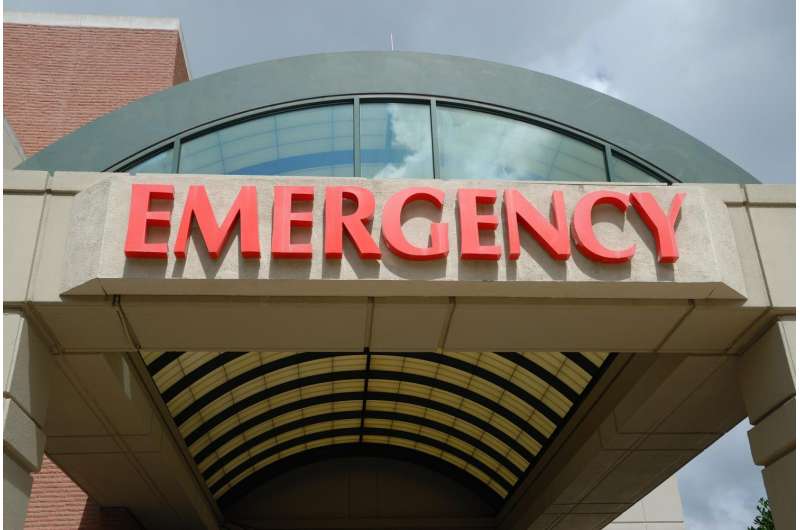Credit: CC0 Public Domain
Emergency departments of hospitals generate significant amounts of environmentally harmful waste which could be reduced through basic changes to disposal policies and practices, while producing lower operating costs, researchers from Massachusetts General Hospital (MGH) have found. Efforts to optimize the daily waste stream through improvements such as switching from disposable to reusable items in the ED, better sorting of infectious waste, and more effective recycling of items like glass and aluminum could have meaningful impact both environmentally and financially, according to the study published in the Western Journal of Emergency Medicine.
"People working in emergency departments have no idea how much waste they routinely generate, nor that the environmental impact is totally at odds with their professional mission to improve health and save lives," says Jonathan E. Slutzman, MD, investigator in the Department of Emergency Medicine at MGH and senior author of the study. "A greater awareness of the harm that's being done, along with the opportunities that are available to turn that situation around, should be on the agenda of every hospital in America."
Healthcare facilities in the U.S. generate 6,600 metric tons of waste each day, making them the second largest contributor to landfill waste (next to the food industry). They also produce 10 percent of all greenhouse gas emission as well as other pollutants known to adversely affect human health. The MGH investigation is the first to quantify and characterize the volume of waste emanating from emergency departments. To that end, researchers conducted a 24-hour waste audit in July 2019 at MGH's Level 1 trauma center in Boston. The team collected, manually sorted into separate categories, and weighed each waste stream component. It also calculated direct pollutant emissions from ED waste disposal activities.
Among the findings was that 85 percent of all items disposed of as regulated medical waste (RMW)—the most hazardous ED materials that must be deposited in red bags and autoclaved to render them safe prior to being sent to landfills—did not meet the criteria for regulated medical waste. "We always want healthcare workers to err on the side of caution when it comes to waste disposal, but the fact is regulated medical waste costs up to ten times as much to dispose of as solid waste," notes Sarah Hsu, with the Warren Alpert Medical School at Brown University, and lead author of the study. "But if we could divert through better sorting some fraction of medical waste that now goes into red biohazard bags to regular solid waste, it would open up significant cost-saving opportunities for hospitals."
Another area rife with opportunity, according to the researchers, is transitioning from the use of disposable devices to more durable, reusable alternatives that would lead to waste reduction and supply savings. One example is the laryngoscope, commonly used in the ED to insert a breathing tube into the trachea, which could be reprocessed onsite and safely used multiple times rather than discarding it after a single use. Rethinking the use of plastic packaging, which was estimated by the MGH study to be responsible for over 40 percent of all emergency department solid waste, also holds the potential for significant waste reduction. MGH, for its part, asks suppliers to ship products in non-disposable bulk packaging, whenever possible, enabling reuse. Suppliers are also "debulking" items at distribution centers, enabling packaging to be reused from that point rather than being shipped all the way to the hospital.
To determine the best opportunities for waste reduction, Slutzman suggests that hospitals conduct their own audits of emergency department waste. "Gaining a full awareness of the problem and its downstream consequences on the health of the community is an important first step toward a solution," he says. "In addition to audits, hospitals should assemble all stakeholders around the table to explore alternatives to their current waste disposal practices. Our study shows that significant improvements can be made to optimize ED waste management, and as healthcare professionals we owe it to our patients and the community to take responsible action."
More information: Sarah Hsu et al, Dumpster Diving in the Emergency Department: Quantity and Characteristics of Waste at a Level I Trauma Center, Western Journal of Emergency Medicine (2020). DOI: 10.5811/westjem.2020.6.47900
Provided by Massachusetts General Hospital






















